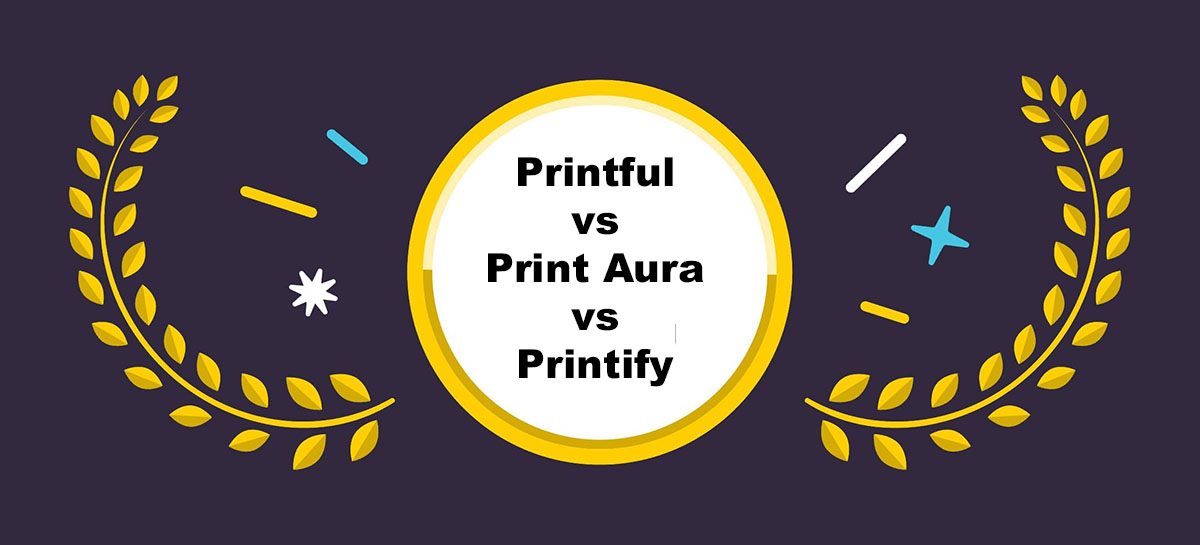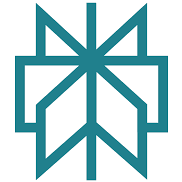I’ve tested all three platforms across multiple Shopify and Etsy stores. I’ve dealt with customer complaints, compared profit margins down to the cent, and shipped hundreds of orders through each service.
Quick answer:
Printful is the best choice if you want branding, consistent quality, and minimal headaches.
Printify wins on variety and cost savings but comes with trade-offs.
Print Aura is basic and outdated but functional for beginners who need something simple.
Let’s break down which print-on-demand provider actually delivers when it comes to your store’s growth and profits.
Printful vs Printify vs Print Aura: Quick Verdict
| Feature | Printful | Printify | Print Aura |
|---|---|---|---|
| Best For | Consistent quality + branding | Lowest base cost + product range | Simplicity + plug-and-play |
| Overall Rating | 4.8 | 4.3 | 3.6 |
| Product Range | 300+ in-house products | 800+ via multiple suppliers | ~100 |
| Branding Options | Best in the market | Limited | Minimal |
| Global Fulfillment | Yes – owned facilities | Depends on supplier | US only |
| Integrations | Broad | Broad | Limited |
| Print Quality | High + consistent | Varies by supplier | Basic |
| Fulfillment Speed | Fast | Varies by supplier | Slower |
| Support | 24/7 chat + email | Email support | Email support only |
Best for Pricing: Printify Offers the Lowest Base Costs
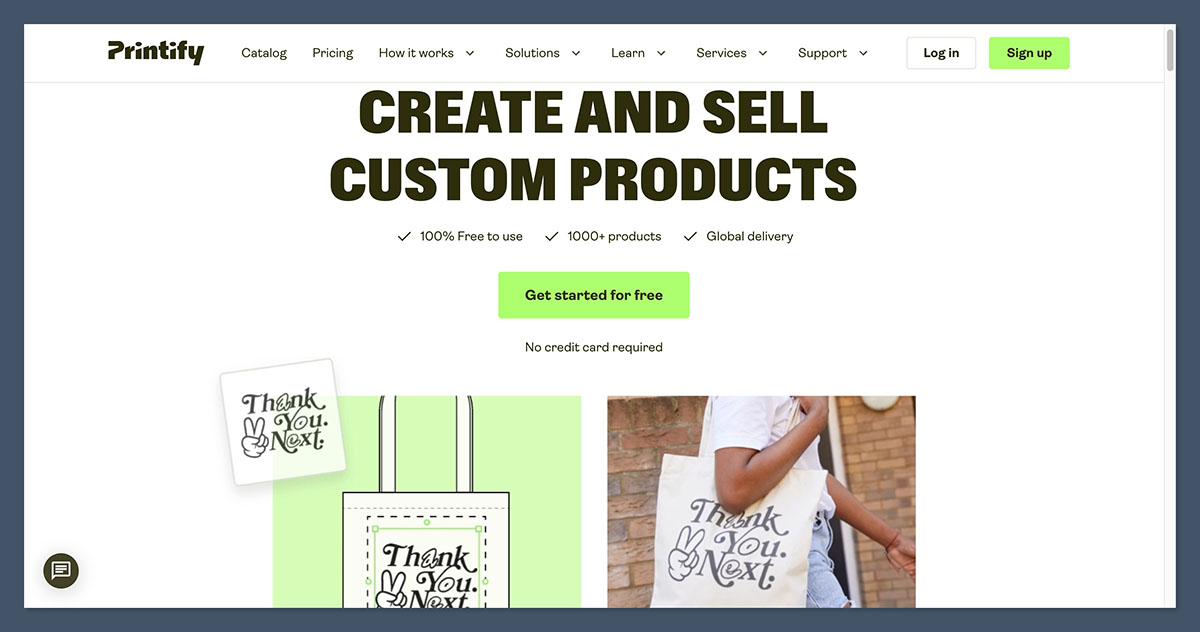
If you’re focused on profit margin, Printify offers the lowest base product pricing out of all three platforms.
That’s because Printify operates more like a marketplace than a manufacturer. It connects you to a wide range of independent print providers, many of whom offer cheaper production costs than Printful or Print Aura.
Here’s a side-by-side comparison of a popular product — the classic unisex Gildan 5000 T-shirt:
| Platform | Base Cost | Fulfilled By |
|---|---|---|
| Printify | $7.35 | Monster Digital (US) |
| Printful | $12.95 | Printful (In-house) |
| Print Aura | $11.50 | Print Aura (In-house) |
That’s a $5–6 difference per unit, which can seriously affect your margins. If your business strategy revolves around offering competitive pricing or frequent discount codes, Printify gives you the margin flexibility to do that without constantly eating into profits.
Printify also offers a Premium Plan at $29 per month, which gives you up to 20 percent off product costs across many items. If you’re scaling to even 30–50 orders a month, that discount often offsets the subscription.
Key benefits of Printify pricing:
- Lowest upfront product cost
- Bulk-friendly for high-volume sellers
- Extra discounts via Printify Premium
But cheaper doesn’t always mean better. Because Printify works with third-party suppliers, quality and fulfillment times can vary significantly. Some providers may cut corners to keep prices low, which can lead to:
- Inconsistent print quality
- Delayed shipping
- Higher return/refund rates
On the other side, Printful is more expensive, but the pricing reflects its in-house manufacturing. You’re paying for end-to-end control — from print quality to fulfillment and packaging. It’s a more predictable experience for you and your customers.
Print Aura sits somewhere in between. It’s slightly cheaper than Printful, but it doesn’t offer the same level of polish or infrastructure. It gets the job done, but lacks the value that comes with higher-tier services.
Summary:
- Printify: Best for budget-conscious sellers or anyone focused on scaling with volume.
- Printful: More expensive, but the pricing includes reliability, better support, and fewer issues.
- Print Aura: Functional if you want a basic solution, but pricing doesn’t bring premium value.
Verdict: Printify wins on base price, but Printful provides more value if quality and customer satisfaction matter long-term.
Best for Product Range: Printify Has the Largest Catalog
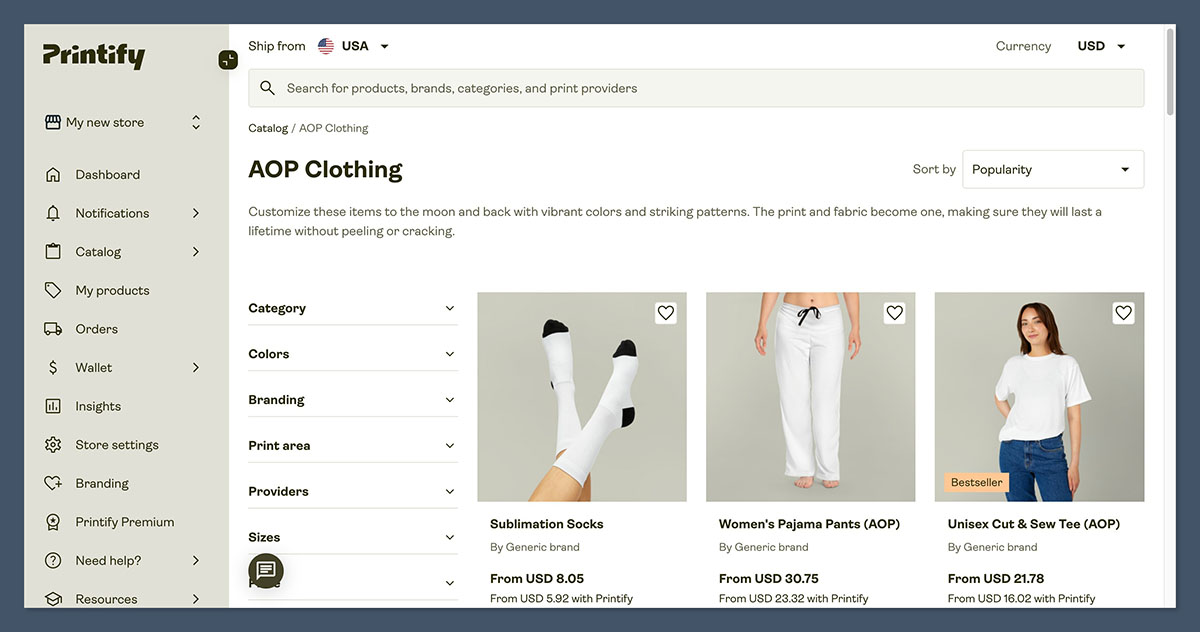
When it comes to sheer variety, Printify offers the most extensive product catalog of all three platforms.
With access to over 800 products from more than 80 global print providers, it opens the door to a broader mix of niches, pricing tiers, and supplier options.
That flexibility means you’re not limited to basic apparel or mugs. You can test different verticals, expand quickly into trending categories, and differentiate your store from other POD brands offering the same limited selection.
Here’s what stood out during testing:
- Apparel and fashion items are the most diverse — multiple cuts, fits, and fabric blends across brands like Bella + Canvas, Gildan, Next Level, and more.
- Niche and novelty products are abundant — from car seat covers, bean bags, lunch boxes, to Bluetooth speakers and shower curtains.
- Each listing includes key fulfillment details:
- Supplier name
- Location (US, EU, Asia)
- Estimated production time
- Shipping cost and regions served
That level of transparency helps when deciding which supplier fits your audience best — especially for international shipping or matching product quality expectations.
| Platform | Product Count | Suppliers | Standout Categories |
|---|---|---|---|
| Printify | 800+ | 80+ third-party | Apparel, accessories, niche decor |
| Printful | 300+ | In-house only | Apparel, wall art, accessories |
| Print Aura | ~100 | In-house only | Basic apparel, mugs, totes |
Printful, by comparison, is more curated. With around 300 products, everything is produced and managed in-house. While that means you’re dealing with fewer options, it also means each item has been tested for print compatibility and quality.
The product lines cover most major categories:
- T-shirts and fashion basics
- Hats, embroidery, and jackets
- Wall prints, posters, and canvas art
- Phone cases, mugs, and tote bags
Printful also regularly introduces seasonal items and premium offerings like cut-and-sew products. It’s ideal for brands that prioritise consistency over chasing trends.
Print Aura has the smallest selection. At roughly 100 products, it sticks to the basics:
- Unisex T-shirts
- Hoodies and sweatshirts
- Mugs and basic accessories
The catalog hasn’t changed much over the years, and it lacks the unique or trending products found on the other platforms. It’s fine for a beginner, but not ideal for store owners trying to stand out.
Summary:
- Printify: Most flexible platform for product testing, market expansion, and scaling across niches.
- Printful: A smaller, more curated range designed for quality assurance and long-term product consistency.
- Print Aura: Basic range suitable for simple storefronts but doesn’t offer much innovation.
Verdict: Printify wins on variety. Printful wins on consistency.
Best for Branding: Printful Leads by a Mile
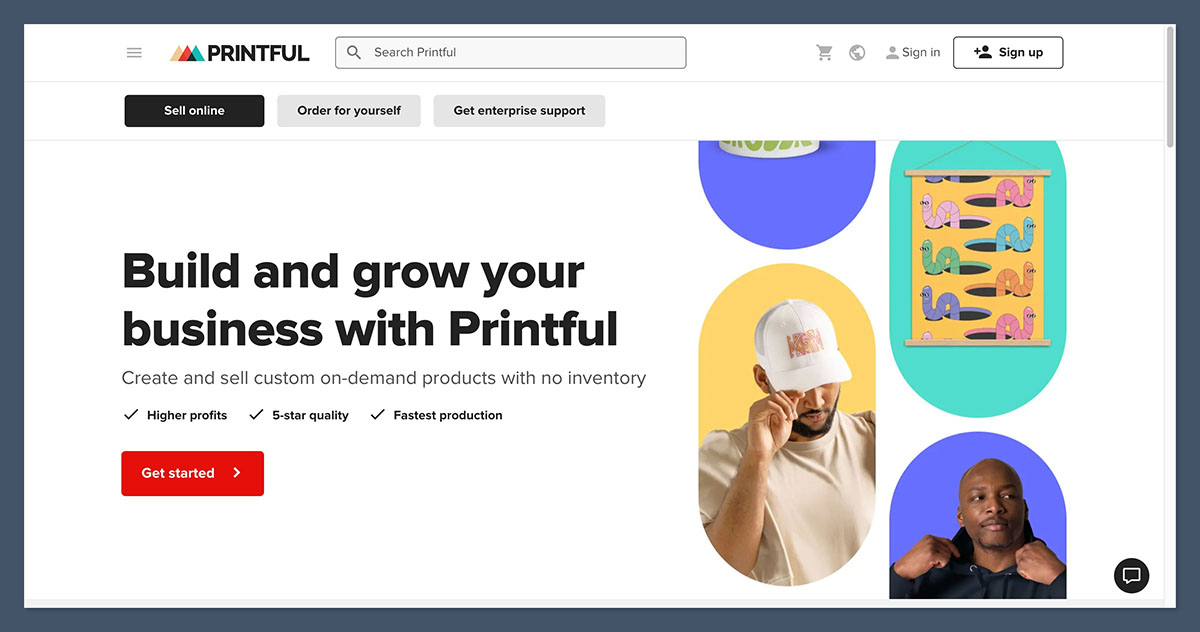
Branding can make or break your POD business. It’s often the key difference between a generic dropshipping store and one that feels like a real brand.
That’s where Printful pulls ahead. Out of all three platforms, it’s the only one offering a full, built-in suite of brand customization options across packaging, inserts, and labels.
Here’s what Printful includes:
- Inside neck labels with size, logo, and care instructions
- Outside labels for additional branding on garment backs
- Branded packing slips with your store name, message, and logo
- Custom inserts like flyers, coupons, or thank-you cards
- Custom return address using your brand name and location
- Logo stickers on packaging (available with select fulfilment centers)
These features helped me position my store as a premium brand. Customers felt like they were ordering from an independent designer — not a faceless POD operation. It’s one of the main reasons I could charge higher prices and still get great feedback.
Printful’s branding support also doesn’t require minimums. You can use these options right away, even with just a few orders per month, making it ideal for growing a small business into something more established.
| Branding Feature | Printful | Printify | Print Aura |
|---|---|---|---|
| Inside Neck Labels | Yes | No | No |
| Outside Neck Labels | Yes | No | No |
| Branded Packing Slips | Yes | Sometimes (supplier dependent) | Yes (basic only) |
| Custom Inserts | Yes | Rare | No |
| Branded Packaging | Yes | No | No |
| Custom Return Address | Yes | Some suppliers only | Yes |
Printify, on the other hand, is hit-and-miss. While it technically supports branded packing slips, they’re only available if the individual supplier allows it — and many don’t. There are no insert options, no branded packaging, and no way to control your brand’s presence across all orders.
Even if you pay for Printify Premium, branding options are limited to what the supplier offers, and it’s not standardised across the platform.
Print Aura offers basic white-label fulfillment. You can use your store’s name on the packing slip, but there are no add-ons or inserts, and the packaging is completely generic. It gets the job done, but it doesn’t leave an impression. It’s more functional than brand-focused.
Summary:
- Printful: Fully branded experience from label to packaging. Helps your business look professional and polished.
- Printify: Branding options vary by supplier. Limited and inconsistent.
- Print Aura: White-label only. Bare minimum for customization.
Verdict: Printful is the clear winner for custom branding and professional presentation. It’s the best choice if you’re building a long-term brand customers remember.
Best for Fulfillment and Shipping: Printful Offers the Fastest, Most Reliable Network
Shipping speed and fulfillment reliability are non-negotiable in ecommerce. Fast delivery builds trust. Slow or delayed shipping leads to negative reviews and refund requests.
From my experience running POD stores across different markets, Printful stands out as the most dependable when it comes to fulfillment and logistics.
Printful owns and operates its own fulfillment centers across multiple continents, giving them control over the entire process — from printing and packaging to dispatch and delivery.
Here’s where Printful fulfills from:
- USA: North Carolina, Texas, California
- Europe: Latvia, Spain
- Other locations: Mexico, Canada, Australia
This multi-location model allows Printful to:
- Automatically route orders to the nearest fulfillment center
- Deliver faster and cheaper based on the customer’s location
- Reduce customs and import issues for international orders
Most of my US orders ship out within two business days and reach customers within 2–4 days. In Canada and parts of Europe, delivery times are slightly longer but still fast compared to other POD platforms.
This consistency matters — especially during Q4 or product launches when customers expect quick shipping.
Printify’s fulfillment, on the other hand, depends entirely on the supplier you choose. Some Printify partners like Monster Digital, SPOKE, and Printed Mint are fantastic — fast turnaround, great tracking, and responsive communication.
Others are slower, inconsistent, or prone to errors. You need to vet each supplier yourself, which takes time and trial-and-error.
Key Printify challenges:
- No centralized standard for shipping time
- Fulfillment speed varies by country and supplier
- International orders may incur longer delays and limited tracking
Print Aura only ships from the US, with no overseas fulfillment centers or backup options.

That means:
- Longer delivery times for non-US customers
- Higher international shipping rates
- No ability to route or split orders based on customer geography
Here’s how the three stack up:
| Platform | Fulfillment Model | Locations Covered | Delivery Time (US) | International Support |
|---|---|---|---|---|
| Printful | In-house | US, EU, CA, MX, AU | 2–4 days | Strong, with local fulfillment |
| Printify | Third-party suppliers | Varies by provider | 2–7 days | Varies; some slow |
| Print Aura | In-house (US only) | USA only | 3–7 days | Slower, expensive shipping |
Summary:
- Printful: Fastest and most reliable for domestic and global orders. Runs on owned infrastructure.
- Printify: Speed varies greatly by supplier. Good options exist, but testing is required.
- Print Aura: Limited to US-only shipping. International fulfillment is not efficient.
Verdict: Printful has the fastest, most reliable global fulfillment network. If speed, delivery accuracy, and geographic coverage matter to your business — this is the platform that delivers.
Best for Integrations: Printful and Printify Are Tied
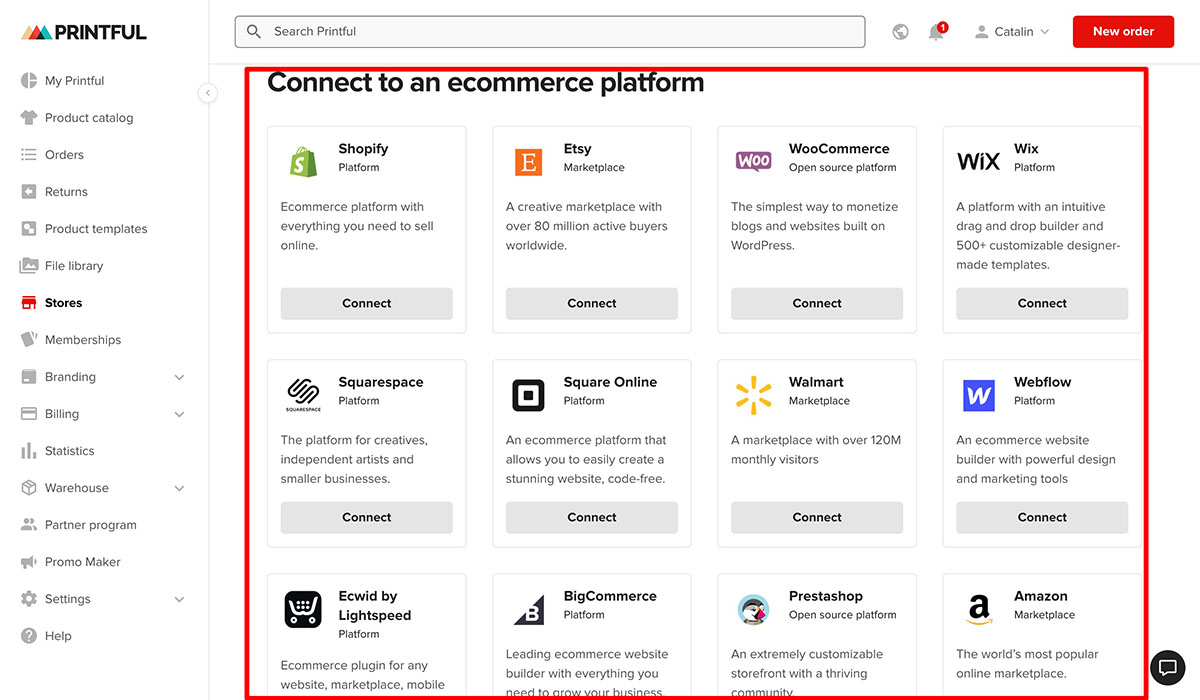
Your POD platform is only as good as the storefronts it connects with. Seamless integrations save hours of manual work, reduce fulfillment errors, and help you scale without worrying about order management.
Both Printful and Printify support a broad range of ecommerce platforms, which is why they’re evenly matched in this category.
Here are the major integrations both platforms support:
- Shopify
- Etsy
- WooCommerce
- BigCommerce
- Squarespace
- Wix
- eBay
- Amazon (typically through third-party apps like Order Desk or via API)
I’ve personally used Printful with Shopify and Etsy, and the experience has been smooth from start to finish. As soon as a customer places an order, it syncs automatically, routes to the correct fulfillment center, and sends out tracking without any manual input.
Printify also performs well on major platforms. I’ve used it with WooCommerce and Squarespace, and once set up, the automation works as expected.
The only difference is that some integrations — like eBay and Amazon — require additional tools like Zapier or manual API connections. This adds a bit more technical work upfront if you’re trying to expand across marketplaces.
Here’s a breakdown of what’s supported natively:
| Platform | Printful | Printify | Print Aura |
|---|---|---|---|
| Shopify | Yes | Yes | Yes |
| Etsy | Yes | Yes | Yes |
| WooCommerce | Yes | Yes | Yes |
| BigCommerce | Yes | Yes | No |
| Squarespace | Yes | Yes | No |
| Wix | Yes | Yes | No |
| eBay | Yes (via app/API) | Yes (via app/API) | No |
| Amazon | Yes (via app/API) | Yes (via app/API) | No |
Print Aura is more limited. It integrates directly with only three platforms — Shopify, Etsy, and WooCommerce — and doesn’t offer support for others unless you rely on workarounds or manually upload orders.
There’s no support for Wix, Squarespace, BigCommerce, or automated connections with eBay or Amazon.
Where Printful and Printify go a step further is in their API documentation. If you’re a developer or working with one, both offer open APIs for deeper customizations. This allows for:
- Custom-built storefronts or dashboards
- Multi-platform syncing
- Automated product publishing
- Custom pricing logic
Summary:
- Printful: Robust integration with most platforms. Excellent automation out of the box.
- Printify: Equally strong, but some integrations require more setup via third-party tools.
- Print Aura: Covers only the basics. Not suitable for multi-channel selling.
Verdict: Printful and Printify are evenly matched on integrations. Both offer strong support for the major ecommerce platforms, while Print Aura is better suited for simpler storefronts.
Best for Print Quality: Printful Is More Consistent

Print quality is one of the biggest make-or-break factors in any print-on-demand business. It’s also the fastest way to lose customer trust — even one poor-quality order can lead to refund requests, negative reviews, or chargebacks.
This is where Printful clearly stands out. Because all of its printing is handled in-house across its owned fulfillment centers, there’s tight quality control at every step. That means:
- Color accuracy stays consistent, even across repeat orders
- DTG (Direct-to-Garment) prints are sharp, clean, and wash-resistant
- Embroidery quality is some of the best I’ve seen from a POD platform
- Defect rate is extremely low, with Printful offering quick resolution if there are issues
I’ve placed over 100 test orders through Printful using a mix of products — T-shirts, hats, hoodies, posters, tote bags, and embroidered beanies. In that time, I haven’t had a single misprint or noticeable defect. That level of consistency is rare in POD.
Printify, on the other hand, operates as an aggregator of third-party print providers. This has pros and cons. On the plus side, you get access to a large network of printers — some of which offer excellent quality. For example:
- Monster Digital consistently delivers sharp, vibrant prints
- Printy6 offers good print depth on fashion apparel
- SPOKE Custom Products is great for accessories and mugs
But others don’t hold the same standards. Some providers use cheaper inks or equipment, leading to:
- Washed-out colours
- Crooked designs
- Poor fabric compatibility
- Ink bleeding after a few washes
The only way to find out is to test each supplier yourself — which adds time and cost upfront.
Print Aura falls behind on print quality. Their operation hasn’t evolved much in recent years, and their print equipment feels dated. On my test orders, I noticed:
- Fading after just a few washes
- Slight off-center placement on shirts
- Less detailed embroidery
They’re fine if you’re looking for basic white-label fulfillment, but the quality won’t hold up if you’re aiming for a premium or brand-focused store.
Here’s how they compare:
| Platform | Print Method | Quality Control | Notable Strengths | Weak Points |
|---|---|---|---|---|
| Printful | In-house DTG & Embroidery | High | Consistency, detail, durability | Higher pricing |
| Printify | Varies by supplier | Inconsistent | Great options available (if tested) | Requires trial and error |
| Print Aura | In-house DTG | Basic | Simple designs | Fading, poor alignment, outdated setup |
Summary:
- Printful: Best-in-class for quality. Reliable, consistent, and scalable.
- Printify: Depends on the supplier. Great options exist, but vetting is essential.
- Print Aura: Adequate for casual use, but not competitive for quality-focused stores.
Verdict: Printful wins for consistent, high-quality printing. If you’re serious about customer satisfaction and repeat sales, it’s the safest choice.
Best for Customer Support: Printful Offers 24/7 Help
When something goes wrong with an order, speed matters. Whether it’s a misprint, shipping delay, or change of address, how quickly your POD platform responds can directly affect your customer satisfaction — and your brand reputation.
Printful offers the strongest support out of the three, with multiple contact options and true 24/7 availability.
This has made a real difference in my day-to-day operations, especially during busy periods like Q4 or flash sales.
Here’s how support compares across all three platforms:
| Platform | Support Channels | Availability | My Experience |
|---|---|---|---|
| Printful | Live chat + email | 24/7 | Quick response times, proactive and knowledgeable |
| Printify | Email only | Mon–Fri | Replies within 1–2 days, accurate but slow |
| Print Aura | Email only | Business hours | Waited up to 3 days, generic responses |
Printful Support
Printful’s live chat support is responsive and reliable. I’ve had tracking issues, address changes, and even last-minute cancellations handled within 10–15 minutes. Their team actually reads your queries and offers practical solutions — not canned replies.
In addition to chat and email, Printful offers:
- A comprehensive help center with articles and videos
- Status updates on system-wide issues (e.g., production delays)
- Internal order logs that make troubleshooting much faster
They also provide order-specific issue reporting, which simplifies communication.
Printify Support
Printify’s support is email-only and available during business hours (Monday to Friday). While the support team is generally helpful and well-informed, the wait times can stretch to 24–48 hours, which feels long when you’re dealing with an unhappy customer.
There’s no live chat at the time of writing, and response quality depends on the complexity of your issue. For common questions, their Help Center does a decent job, but for order-level problems, you’ll often need to wait.
Print Aura Support
Print Aura’s support feels dated. It’s also email-only, and they’re usually slow to respond.
On one occasion, I waited three full business days to hear back about a missing tracking number. Their knowledge base is thin, and responses are often generic or scripted.
If you’re managing a store with time-sensitive customer service, these delays can hurt your response time and lead to avoidable refunds.
Here’s a quick feature comparison:
| Support Feature | Printful | Printify | Print Aura |
|---|---|---|---|
| Live Chat | Yes | No | No |
| Email Support | Yes | Yes | Yes |
| 24/7 Availability | Yes | No | No |
| Response Time (avg) | Under 30 mins | 24–48 hrs | 48–72 hrs |
| Self-Help Resource Quality | High | Moderate | Low |
Summary:
- Printful: Fast, accessible, and professional support team. Best for handling high-volume stores or urgent issues.
- Printify: Support is reliable but not built for speed. Works if you’re not in a rush.
- Print Aura: Slow and outdated. Only suitable if you rarely need help.
Verdict: Printful offers the most reliable and responsive customer support. For ecommerce businesses that depend on fast resolution and hands-on assistance, it’s the clear winner.
Final Verdict: Which One Should You Use?
After running multiple print-on-demand stores and testing all three platforms in real-world conditions, here’s how I’d break it down. Your choice depends on your priorities — branding, profit margins, product selection, or simplicity.
Let’s revisit what each platform offers and who it’s best suited for.
Go with Printful if:
- You want to build a premium brand that customers remember
- You need consistent print quality with little risk of defects
- You value branded packaging, inserts, and labels
- You want 24/7 support with fast resolutions
- You prefer a platform that handles everything in-house, including printing and fulfillment
Printful isn’t the cheapest option, but you get what you pay for — professional presentation, global fulfillment, and reliable operations. It’s the platform I’d recommend to anyone building a serious, long-term ecommerce business.
Choose Printify if:
- You want the lowest product costs and higher profit margins
- You need access to a massive catalog with niche products
- You’re comfortable testing and managing third-party suppliers
- You’re looking to offer variety and volume over premium quality
- You’re willing to trade some consistency for scale and flexibility
Printify gives you freedom — but with freedom comes more responsibility. If you’re experienced, willing to do your supplier homework, and focused on maximizing margin, it’s a strong option.
Use Print Aura only if:
- You’re on a tight budget and need a bare-bones solution
- You plan to sell basic POD items like tees and mugs
- You don’t need advanced branding, integrations, or global reach
- You’re okay with slower support and fewer product options
Print Aura can work for beginners or hobbyists who just need to get up and running. But it’s limited in almost every category — and not something I’d recommend for scaling or brand-building.
| Use Case | Best Platform |
|---|---|
| Best for branding and reliability | Printful |
| Best for low product costs | Printify |
| Best for beginners on a budget | Print Aura |
Summary:
- Printful is the all-in-one solution for businesses that want control, professionalism, and brand presence.
- Printify is for sellers chasing variety and margins — ideal if you’re hands-on and testing multiple niches.
- Print Aura is a starter option, but not built for long-term growth.
Choose the platform that aligns with your goals — and be honest about what kind of business you’re building. One isn’t better than the other across the board, but the wrong fit can slow you down fast.
